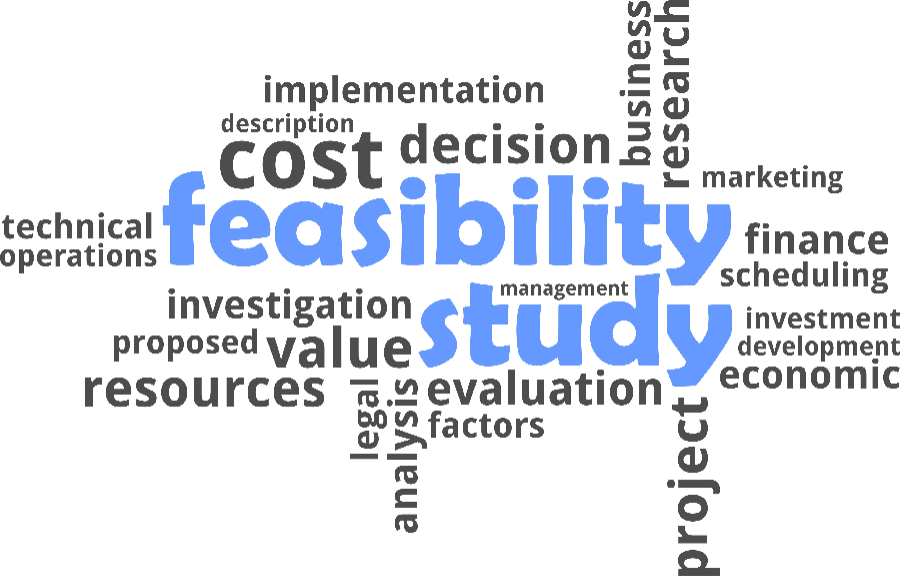Before starting a new business or launching that new product/service, you should consider conducting a feasibility study. A feasibility study is a type of research project that is beneficial in ascertaining if a project is practical and viable. Your study also lays the foundation for the preparation of a formal business plan.
Feasibility studies that are used for business startups typically include a detailed business and product description, competitive analysis, marketing strategy, and financial plans. At its completion, you should be able to make an informed decision whether to go forward with the planned endeavor or to abandon it.

To conduct a business startup feasibility study, start by gathering answers to the following questions:
Step 1 - How would you describe your business and what is your product or service?
When describing what your business does, certainly you should include your venture’s name, location, and product descriptions. However, it would be best to go beyond merely describing what you do. Instead, consider describing your venture in terms of the value your company’s provides and the problems it solves for target customers. For example, a hardware store owner sells its products to seasoned professionals and novice do-it-yourself enthusiasts. For carpenters, the equipment they purchase enables the delivery of professional-grade solutions for their customers, saving time and being mobile and reliable. Likewise, DYIers purchase tools that are low-cost and easy to use. These are the resources used to fulfill that home-improvement vision with professional-like results and the satisfaction of saying, ”I did that.”
Step 2 - How does the product/service differ from the competition?
The research document should include a Product Description section that clearly describes your product/service. Be sure to include what sets your product apart from the competition. What is it about your product that will make people want to change their brand preference.
Identify your top three to five competitors and list the like-kind features of each competitor using a grid format. The grid makes it easier to evaluate similar features. It also highlights gaps, which may be an opportunity your company can fill. Some areas to consider for differentiation are whether your product/service is more convenient, easier to use, less expensive, or having a better product design or superior warranty.
Step 3 - Who is your customer?
Understanding your customer is critical, and creating a customer persona can help you get to know your customer better. A deep understanding of your target customer can reduce advertising costs because your advertising dollars is used to only attract people who are most likely to purchase your product and services. Most personas include the following types of demographic attributes:
- gender
- age
- income levels
- geographic location
- education levels and more
When you finish preparing your customer personas, they can then be used to identify the number of people in your target market area possess the attributes you are seeking. This information becomes the foundation for quantify your business opportunity in terms of market size, market strategy and revenue projections.
Step 4 - How will the customer react to your product/service?
It’s important to find out if there is customer demand for the items you plan to sell. The simplest way to do that is to ask people who match your customer persona. Consider using online or paper-based surveys, one-on-one interviews, focus groups or product samples.
Your survey should center around three questions:
- Does the person taking the survey want your product?
- What is the location or delivery method do they expect when making a purchase?
- How much are they willing to pay for it?
Step 5 - How much money will it take to launch the business?
Many businesses have enough money to get started, but do not have enough to reach the point of profitability. To determine the point of profitability, your will need three items; a start-up budget, a proforma income statement and a cash flow analysis You can easily create each of these documents using financial forecasting software.
The start-up budget projects the cost to get the business up and running. It includes items such as the cost for your plant facilities, equipment, initial inventory, research and development cost, product development, prototypes, patent fees, legal fees, etc.
Your pro-forma income statement tracks your company’s operating performance in terms of revenues, expenses and net profit/loss. This document is key in determining the point of profitability.
The cash flow statement monitors the source and amount of the cash generated by the business (cash in-flows) and how that cash is used (cash outflows). It also shows you cash position at the end of each reporting period. Where there are cash shortfalls (negative cash balance , more revenue, fewer expenses or additional investments are needed to cover the shortfall.
Step 6 - Where is the money to launch coming from?
For most small business, funding generally comes from company owners, family and friends. When these resources are not enough to adequately fund the business, owners then turn to banks, the Small Business Administration (SBA), angel investors and crowd funding as options.
Step 7 - Evaluate your research results and make the go/no-go decision.
At the completion of your feasibility study, based on your goals, you now be positioned to make an informed decision regarding whether to move forward with implementing your business idea. If study results meets or exceeds your expectations, the next step is to create a formal business plan and launch your endeavor. If results fall short of your desires, consider revising your strategy or dropping the idea altogether if circumstances warrants it. In either case, a feasibility study can you save time, money and improve your chances of success.
